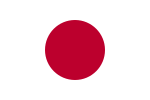Historiography of Japan
| Part of a series on the |
| Culture of Japan |
|---|
 |
You can help expand this article with text translated from the corresponding article in French. (August 2016) Click [show] for important translation instructions.
|
Historiography of Japan is a term for the study of the methodology and development of "history" as an academic subject in Japan. The term also means the evolving list of historical works which have been written over the course of centuries.
History
| Part of a series on the |
| History of Japan |
|---|
 |
The process of compiling a written history of Japan began in the seventh century. The most important of the early works are the Rikkokushi or six national histories which were written in the 9th century.[1] The strategies for writing history changed over time. The earliest works were created by Imperial edict. In 1793, the Tokugawa shogunate established the Institute for Japanese Studies (Wagaku Kôdansho).[2] In 1869, Emperor Meiji issued an Imperial rescript which explained the importance of historiography:
Historiography is a for ever immortal state ritual (taiten) and a wonderful act of our ancestors. But after the Six National Histories it was interrupted and no longer continued .... Now the evil of misrule by the warriors since the Kamakura period has been overcome and imperial government has been restored. Therefore we wish that an office of historiography (shikyoku) be established, that the good custom of our ancestors be resumed .... [3]
In 1929, the Meiji period office of historiography was renamed the Historiographical Institute (Shiryo Hensan-jo).[2]
Selected works
Extant
- Kojiki, 712[4]
- Nihon Shoki, 720[5]
- Gukanshō, c. 1220—historical argument, Buddhist perspective[6]
- Shaku Nihongi, 13th century—an annotated version for Nihon Shoki[7]
- Jinnō Shōtōki, 1359—historical argument, Shinto perspective[8]
- Nihon Ōdai Ichiran, 1652—historical argument, neo-Confucian perspective[9]
- Tokushi Yoron, 1712—historical argument, rationalist perspective[10]
- Dai Nihon Shiryō, overview of records between the years 887 and 1867[11]
Partially or completely lost
- Kokki, 612[12]
- Tennōki, 620[13]
- Teiki, 681[14]
- Iki no Hakatoko no Sho, a historical record used as a reference in the compilation of Nihon Shoki[15]
See also
- Chinese historiography
- Historiographical Institute of the University of Tokyo
- International Research Center for Japanese Studies
- Japanese Historical Text Initiative
- Historiography
- Philosophy of history
References
- ^ Nussbaum, Louis-Frédéric. (2005). "Rikkokushi" in Japan Encyclopedia, pp. 789-790.
- ^ a b Historiographical Institute, University of Tokyo, "History"; retrieved 2013-2-1.
- ^ Mehl, Margaret. (2002). "German Influence on Historical Scholarship in Meiji Japan," in The Past, Present and Future of History and Historical Sources, p. 227; Umesao, Tadao et al. (2000). Japanese civilization in the modern world, Vol. 16, p. 47.
- ^ Japanese Historical Text Initiative (JHTI), Kojiki; retrieved 2013-2-1.
- ^ JHTI, Nihon Shoki; retrieved 2013-2-1.
- ^ JHTI, Gukansho; retrieved 2013-2-1.
- ^ Nussbaum, "Shaku Nihongi" at p. 848.
- ^ JHTI, Jinno Shotoki; retrieved 2013-2-1.
- ^ Nussbaum, "Nihon-ō dai ichi ran" at p. 709.
- ^ JHTI, Tokushi Yoron; retrieved 2013-2-1.
- ^ Historigraphical Institute (Shiryō hensan-jo), University of Tokyo, "Dai Nihon Shiryo"; retrieved 2013-2-1
- ^ Nussbaum, "Kokki" at p. 549.
- ^ Nussbaum, "Tennō-ki" at p. 960.
- ^ Nussbaum, "Teiki" at p. 955.
- ^ Nussbaum, "Iki no Hakatoko" at pp. 379-380.
Further reading
- Brownlee, John S. (1997) Japanese historians and the national myths, 1600-1945: The Age of the Gods and Emperor Jimmu. Vancouver: University of British Columbia Press. ISBN 0-7748-0644-3 Tokyo: University of Tokyo Press. ISBN 4-13-027031-1
- Brownlee, John S. (1991). Political Thought in Japanese Historical Writing: From Kojiki (712) to Tokushi Yoron (1712). Waterloo, Ontario: Wilfrid Laurier University Press. ISBN 0-88920-997-9
